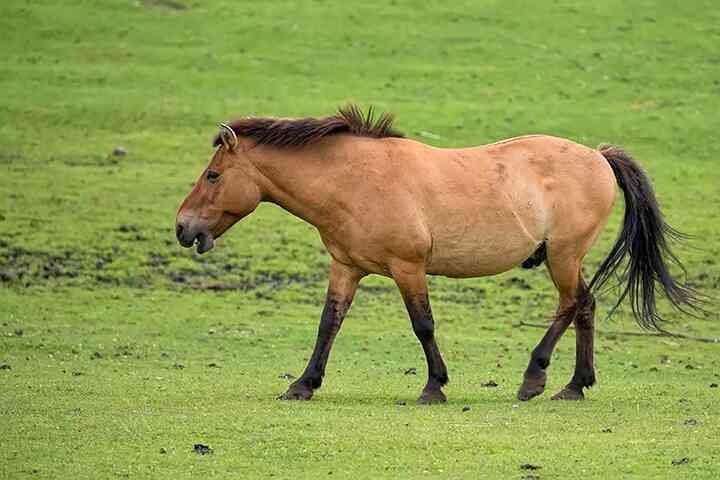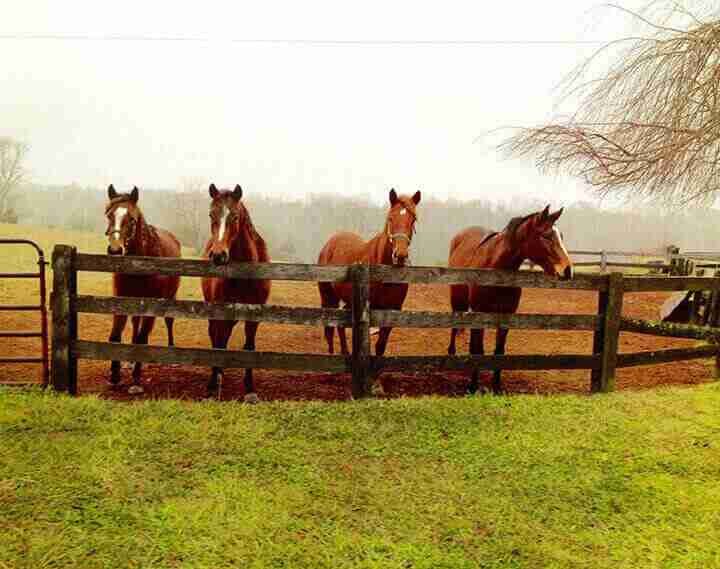In the vast and untamed landscapes of Central Asia, a remarkable equine species stands as a testament to resilience and survival: Przewalski’s horse (Equus ferus przewalskii). Often referred to as the last wild horse, the Przewalski’s horse has a storied history, marked by near-extinction and successful conservation efforts. In this exploration, we delve into the intriguing world of Przewalski’s horses, examining their unique characteristics, historical context, and the ongoing conservation endeavors that seek to secure their place in the wild.
Characteristics of Przewalski’s Horse
1. Physical Appearance:
Przewalski’s horses are sturdy and compact, standing about 4.6 to 5.6 feet (1.4 to 1.7 meters) tall at the shoulder. They exhibit a dun coloration with a dark dorsal stripe running along their back, a trait that distinguishes them from other horse breeds.
2. Mane and Tail:
Known for their erect and dark manes, Przewalski’s horses also sport a tufted tail with a dark switch at the end. The distinctive appearance of these horses adds to their allure and visual uniqueness.
3. Build and Adaptations:
Well-adapted to the harsh environments of their native habitats, Przewalski’s horses possess strong hooves and a robust physique. Their ability to thrive in regions with extreme temperatures and sparse vegetation showcases their adaptability.
Historical Context
1. Origins:
Named after the Russian explorer and naturalist Nikolai Przhevalsky, who first described the species in the late 19th century, Przewalski’s horses have ancient roots. They are believed to be the only remaining truly wild horse subspecies.
2. Survival Challenges:
Historically, Przewalski’s horses faced challenges such as habitat loss, competition with domestic livestock, and hunting. By the mid-20th century, they were on the brink of extinction in the wild.
3. Conservation Efforts:
In a remarkable conservation success story, concerted efforts were made to save Przewalski’s horses from extinction. Captive breeding programs were initiated, and careful reintroduction strategies were employed to reestablish wild populations.
Conservation and Reintroduction
1. Captive Breeding:
Captive breeding programs played a pivotal role in ensuring the survival of Przewalski’s horses. Zoos and reserves around the world collaborated to maintain genetically diverse populations, providing a safety net against complete extinction.
2. Reintroduction to the Wild:
Beginning in the 1990s, carefully managed reintroduction projects sought to return Przewalski’s horses to their native habitats. These projects involved acclimating horses to the challenges of the wild, preparing them for a life of independence.
3. Mongolia: A Key Habitat:
Mongolia, with its vast and sparsely populated expanses, became a focal point for reintroduction efforts. The Hustai National Park in Mongolia, in particular, witnessed successful releases of Przewalski’s horses into the wild.
Current Status and Future Prospects
1. Population Numbers:
While the population of Przewalski’s horses in the wild is still modest, the species has made a remarkable comeback. Continuous monitoring and conservation efforts aim to bolster their numbers and ensure genetic diversity.
2. Challenges Ahead:
Despite the successes, challenges persist. Encroachment on their habitats, competition with livestock, and potential disease transmission remain concerns. Ongoing research and adaptive conservation strategies are crucial for addressing these challenges.
3. Symbol of Conservation:
Przewalski’s horse stands as a symbol of the impact and importance of dedicated conservation initiatives. Its story underscores the potential for human intervention to reverse the course of extinction and preserve Earth’s diverse and endangered species.
Conclusion
Przewalski’s horse, the last wild horse, embodies the indomitable spirit of survival against daunting odds. From the brink of extinction to carefully managed reintroductions, this species has navigated a tumultuous journey. As we marvel at the resilience of Przewalski’s horses, their story serves as a beacon of hope, urging us to continue our commitment to conservation and the protection of our planet’s precious biodiversity. Through ongoing efforts and shared responsibility, we can ensure that the hoofprints of Przewalski’s horses continue to mark the wild landscapes they call home.






